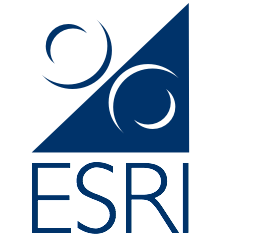New ESRI research highlights strong trade relationship between Ireland and Northern Ireland

Goods trade between Ireland and Northern Ireland has grown substantially since Brexit. International trade is strongly linked to better overall economic performance, particularly in relatively smaller countries where the size of the domestic market may limit the ability of firms to achieve economies of scale. Research published by the ESRI examines new data on Northern Ireland’s exports and imports on a detailed product and market level. The analysis was undertaken as part of a research programme on the all-island economy funded by Ibec.
Northern Ireland reported a total of €7.6 billion in goods imports and €10.5 billion in goods exports in 2021 (excluding sales to Great Britain which are not included as international trade). Of these flows, approximately 35 per cent of imports (€2.6 billion) come from Ireland and 53 per cent of exports go to Ireland (€5.6 billion). Ireland has considerably higher overall total goods imports and exports, at €99.8 billion and €160.3 billion respectively in 2021.
Exports
While sales and purchases with Great Britain account for the largest proportion of Northern Ireland’s external sales, its international trade (i.e., excluding Great Britain) is heavily concentrated in cross-border trade with Ireland. Ireland purchased 53 per cent of total Northern Ireland exports and accounted for almost 35 per cent of Northern Ireland’s imports. The next most important export partner for Northern Ireland is Germany, accounting for 15 per cent of total exports.
Other individual markets account for much smaller shares of total exports but the cumulative share of the rest of the EU excluding Ireland is approximately one-third of the total exports of Northern Ireland. Northern Ireland makes up almost 5 per cent of Ireland’s total goods imports and just over 2 per cent of exports, which are sizeable shares given the much smaller size of the Northern Ireland economy relative to the other top ten partner countries.
Cross-border trade
Investigating the role of distance and market size as determinants of trade flows, the research finds high levels of trade integration across the border. At a sectoral level, both Northern Ireland and Ireland have relatively high concentrations of trade in the chemicals and pharmaceuticals sector. Cross-border trade looks quite different in both directions to the aggregate trade structures of Ireland and Northern Ireland. This mainly comes about from a much greater variety of goods being traded cross-border relative to the more specialised patterns of overall trade. The food and beverages sector accounts for a considerably larger share of cross-border trade than it does in the overall trade structure, with 24 per cent of goods going from Ireland to Northern Ireland in this sector, and 27 per cent of goods going from Northern Ireland to Ireland.
 One of the report’s authors, Martina Lawless (pictured above), commented: “Both Ireland and Northern Ireland have policy priorities of developing international markets and supporting domestic firms to export. Cross-border trade can play a role as an accessible first step into broader exporting and this new data on trade patterns may help in the development of such policies.”
One of the report’s authors, Martina Lawless (pictured above), commented: “Both Ireland and Northern Ireland have policy priorities of developing international markets and supporting domestic firms to export. Cross-border trade can play a role as an accessible first step into broader exporting and this new data on trade patterns may help in the development of such policies.”
Commenting on the research, Ibec Director of Lobbying and Influence, Fergal O’Brien said “Ibec is delighted to support research work at the ESRI on the all-island economy and the latest publication on all island trade will provide businesses with invaluable insights on trade and supply chain trends in a post-Brexit context. Business is increasingly aware of the growing opportunities in the all-island economy. The ESRI research demonstrates the pace of this trade growth in recent years and the importance of trade with the EU for Northern Ireland businesses. The research will inform a better understanding of the overall functioning of the all-island economy and also support development of the all-island macroeconomic model which the research programme will ultimately deliver.”


























